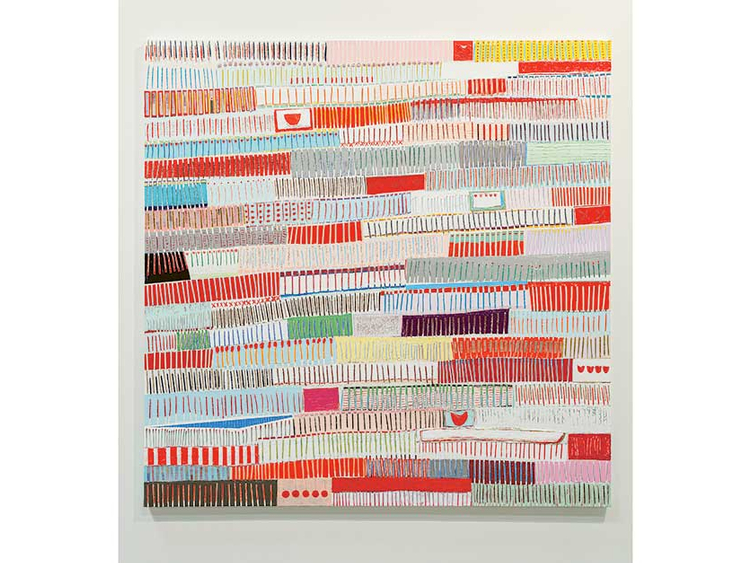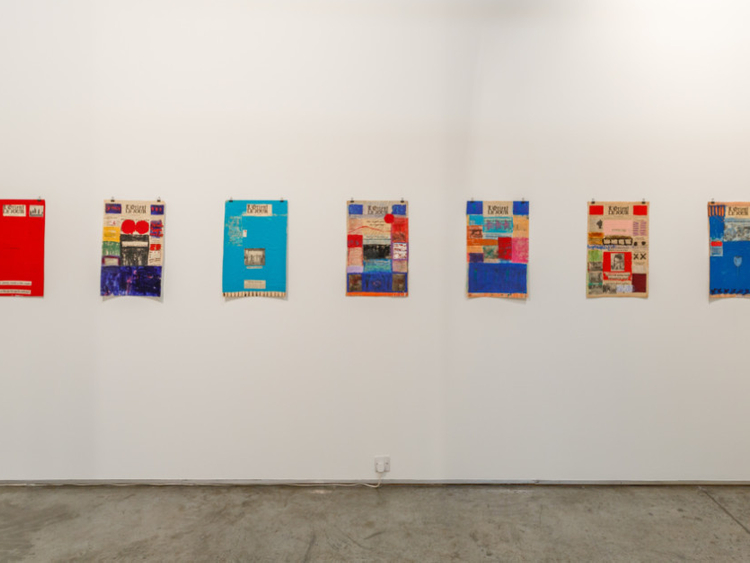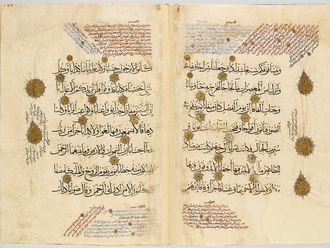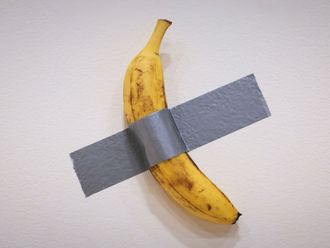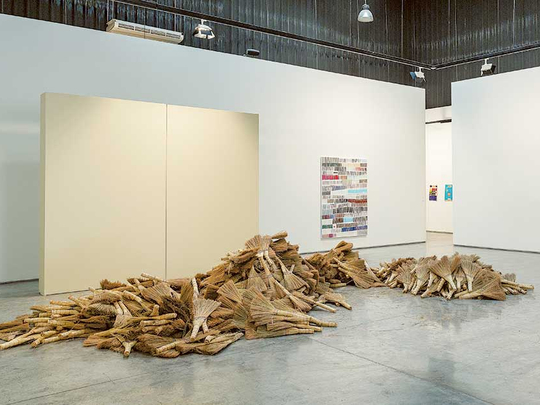
Lebanese artist Nada Sehnaoui’s work deals with issues of war, collective and personal memory, public amnesia, the writing of history and the construction of identity.
She is known for creating several thought-provoking public art installations in Beirut about the Lebanese Civil War.
Sehnaoui is also a writer, who writes about human rights and political issues in leading Lebanese newspapers, and has published a book about the Westernisation of daily life in Beirut. The artist is a member of Bahithat, the Lebanese Association of Women Researchers, and a founding member of the Civil Centre for National Initiative.
Unlike most artists, Sehnaoui’s political activism is not limited to her studio. She is an active supporter of Beirut Madinati, an initiative aimed at improving the city by electing qualified, committed, politically unaffiliated individuals to the municipal council, and stood as a candidate in the recent municipal elections.
Sehnaoui’s first exhibition in Dubai, “Along These Lines”, features recent works by the artist as well as some important older works, such as pieces from her iconic series “Peindre L’Orient Le Jour”, which has never been exhibited outside Lebanon before.
For this series, the artist created various interventions on the front page of the French newspaper “Peindre L’Orient Le Jour” every day for the entire 1999. The project represents a re-writing, re-interpretation and censorship of major events in post-war Lebanon, occupying a space between individual narrative, collective memory and official history.
“I was angry and sad about the fact that people hardly talked about human rights, women’s rights and the 17,000 people that had disappeared during the Lebanese Civil War. I wanted to bring those issues on to the front page, so every day I did various interventions such as bringing articles from the back pages on to the front page, painting over or crossing out text, writing my comments about images and stories, and sometimes just silencing the news by painting over it to create colourful visual spaces. By November, I had had enough and simply shredded the papers and put them in a bowl; and in December I just covered the pages with white paint to tone down all the excitement about the millennial celebrations. Throughout this series I only used material that was available in my studio and in the newspaper,” Sehnaoui says.
Another iconic installation, “To Sweep”, was originally created by the artist just a few weeks before the revolution in Tunisia in response to the restlessness and momentum for change that she could sense.
Featuring more than 400 brooms standing like an army over pieces of paper printed with words expressing the anger against dictatorial leaders and the desire for freedom, the work spoke about the need to sweep out the dirt and things that are no longer needed.
For her show in Dubai, Sehnaoui has created a new installation with 750 straw brooms arranged on the floor, making a strong statement about the current situation in the region.
The most recent works in the show is a series of mixed media works on canvas titled “How Many, How Many More”. The origin of these works can be traced to “Lebanese War Statistics”, a work Sehnaoui created in 1994, which is displayed in the show.
“In 1991, I saw this very tiny article in the international press about the war in Lebanon, which mentioned statistics about the many thousands that had been wounded or killed and the number of cars and buildings that had been damaged. I was shocked at the negligible coverage of a war that had lasted 15 years and devastated my country. So I enlarged the article and did other artistic interventions on it to highlight the statistics. Since then I have been working with statistics of war, using painterly gestures and repetition of geometrical elements and mundane objects or materials in my work to make sure that the history is not forgotten. Today when the world is collapsing around us, I have started counting again the number of people dying, injured and forced to flee from their homes. And I am asking the question — how many, how many more?” she says.
In these new works, the artist has covered her canvases with rows of vertical stripes made with acrylic paint, pastels, crayons, coloured pencils, bits of newspaper and shredded maps of the Middle East.
The lines refer to statistics from wars in the region, enumerating victims and counting time, while also blurring the borders between Lebanon, Syria and Iraq. The arrangements of repetitive lines, the bright colours, and the multiple layers in the artworks form textured, abstract landscapes that speak about the pain of innumerable losses, about forgetting and remembering, and about individual and collective mourning.
Despite the nature of the subject, Sehnaoui’s palette is bright and vibrant. “These colours come from deep inside me. Even when there is a war in Lebanon, the sky is blue, the Sun shines brightly, and the people still want to go out and enjoy themselves and be happy. These are the colours I grew up with in Beirut and I cannot get them out of me regardless of the circumstances,” she says.
Jyoti Kalsi is an arts-enthusiast based in Dubai.
“Along These Lines” will run at Gallery Isabelle Van Den Eynde, Alserkal Avenue, Al Quoz, until June 16.



